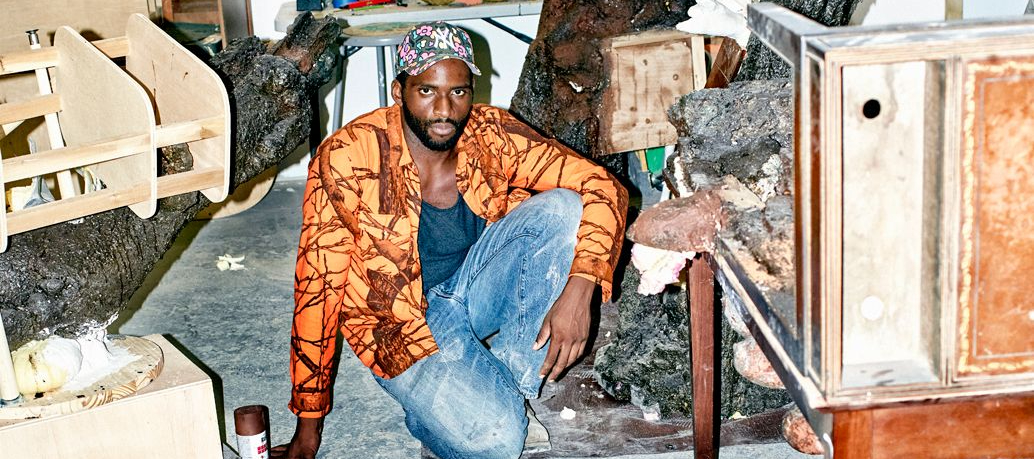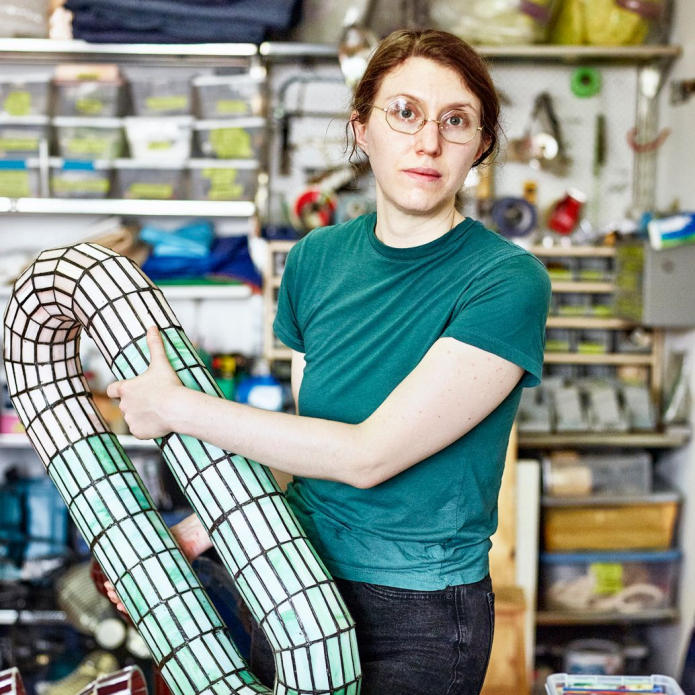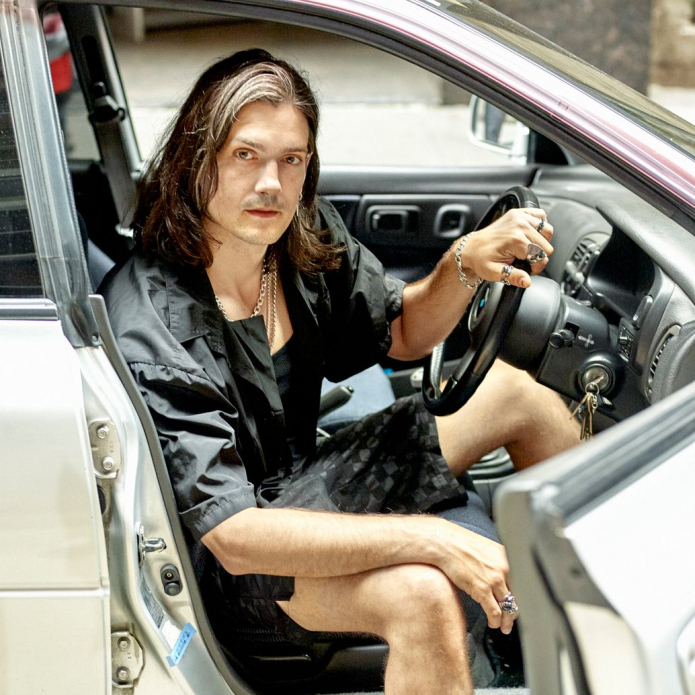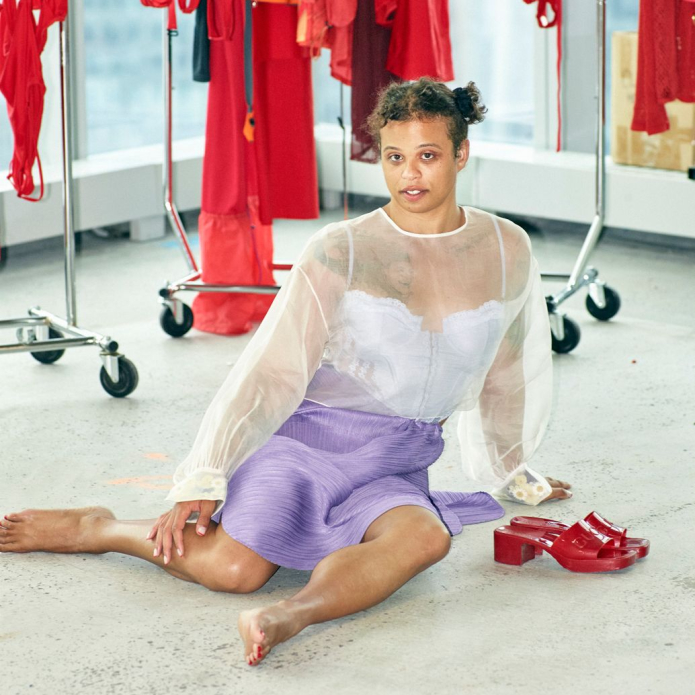Brandon Ndife officially broke up with painting more than a decade ago, but they still flirt. The sculptures that the Indiana-born, New York-based artist phased into bear the marks of oil’s licks but without all the canvas fuss. Instead, recent works use ready-made containers of domestic life like cabinetry, desks and shelves as the foundation for rowdy new amalgams that push familiar signifiers of comfort and order into uncategorizable entropy. At “MY ZONE,” Ndife’s solo debut at Bureau gallery in March 2020, the silhouettes of a sconce, a door and a side table, altered by polyurethane foam, corn husk and aqua resin excrescences, arrived barely recognizable as themselves. Abetted by the institutional lighting, the tableaux invoked the image of an examiner reconstituting an accident in their studio for further study, poring over the hand-painted wreckage. If these homey leftovers were once completely scorched by disaster, here they were presented in recovery, in fungal rebound. Ndife imitates the creeping tendrils of new life with abstract-expressive gestures and various plastics, and his painterly handiwork and precise coloring have been described as verging on trompe l’oeil illusion.
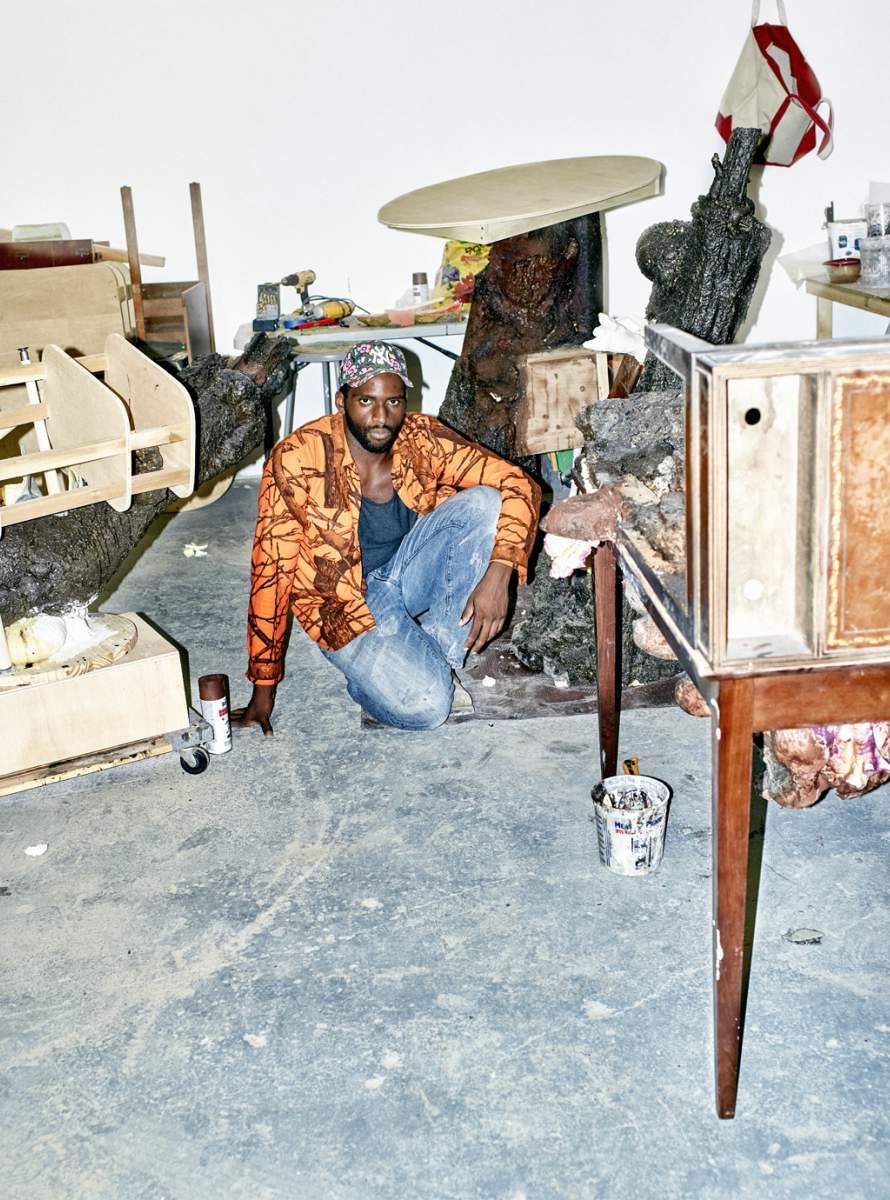
“I tend to enjoy accessible material, so perhaps [my work] is like trompe l’oeil in the way these operate as portals that get us thinking about objects that are larger than our systems, that are larger than ourselves,” Ndife says. He adds, “But I’m never trying to make a smoke screen. It is very much a hand-applied process, any texture you see is what it is. It’s not trying to conceal itself. Why I tend to use raw materials is because they become activators for conversations, and all lesser kinds of considerations like ‘What are we looking at?’ fall aside.” In Ndife’s work, the emotional plane takes precedence over the laboriousness of aesthetic execution. The sculptor is a generous host who embraces the medium’s capacity for creating bridges of familiarity even in alien contexts.
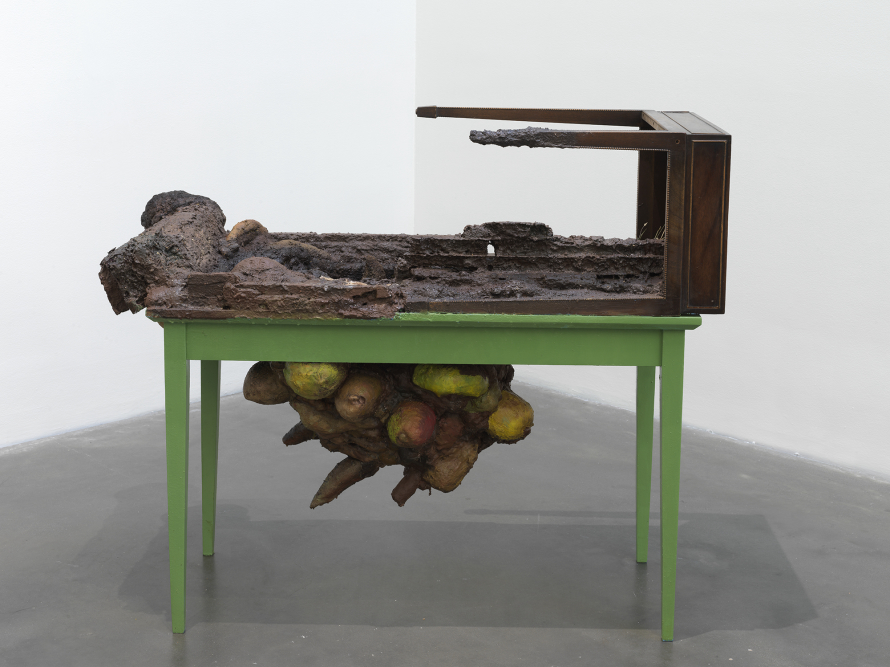
This fall, the artist lavished final flourishes on a set of new works that push the scale from the semi-contained chaos of Tetsumi Kudō bird-cages to the more threateningly life-sized gestures of Robert Gober and Louise Bourgeois cells (all of whom are touchstones for Ndife). Luckily for the shippers, Ndife and us, these menacingly beautiful pieces wouldn’t have to travel far to their next destination: the New Museum Triennial. “I’m always making last-minute changes,” Ndife admits, still in the period of adjustments. “The works are organically evolving all the time, not just to suit the spaces they inhabit.” The ambiguity of whether these advancements are the material’s or Ndife’s gets to the line of reasoning the artist has been pushing us towards, where substitutes can be main characters and destruction can be progress; his own future holds several institutional shows that are for now, like his aims, under wraps.

